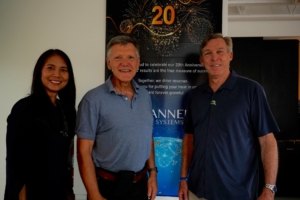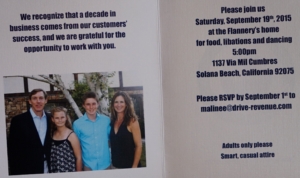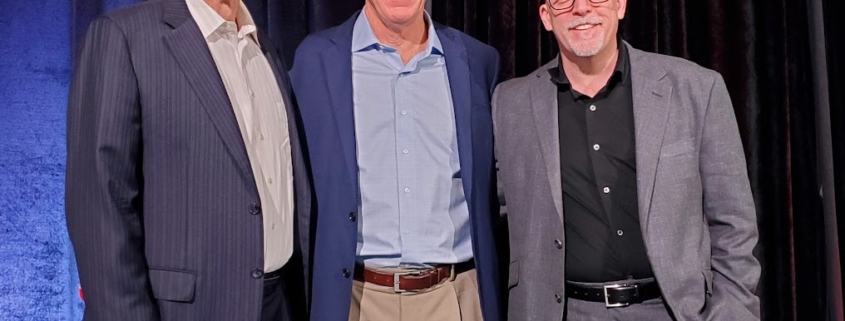In the swamps by the bayou, you can’t often see what’s coming at you. How about in your revenue pipeline? Click the video to listen more on increasing your visibility to revenue.
Archive for month: June, 2025
In today’s competitive market, a well-defined commercial strategy is essential for achieving long-term success in sales. But what separates high-performing sales teams from those that struggle isn’t just the strategy itself—it’s how effectively that strategy is executed.
Tactical execution transforms a high-level commercial vision into real, measurable results.
Let’s explore the key elements of tactical execution in life science sales, and how businesses can align their teams to ensure every move propels them closer to their goals.
What Is TECS?
Tactical execution refers to the specific, actionable steps taken to bring a broader commercial strategy to life. While commercial strategy focuses on the long-term vision—such as market positioning, customer acquisition, and revenue goals—tactical execution is about the how. It’s the day-to-day Sales activities that ensure sales targets are met, pipelines are built, and relationships with customers are strengthened.
In essence, TECS translates your strategy into action. Without it, even the best commercial strategy will fall flat.
- Define Clear Objectives and Metrics
One of the first steps in tactical execution is ensuring every team member knows the specific objectives they are working toward. Sales leaders must communicate clear KPIs that align with strategic goals, such as:
- The number of qualified leads generated.
- Conversion rates at various stages of the sales funnel.
- Average deal size or customer lifetime value.
- Use Customized Sales Tools for Conversations
Sales teams can no longer rely on instinct alone. The use of tools that are created for market specific applications for your product and services are essential. Forrester Research says only 26% of sellers know how to articulate the value their company provides. Don’t leave it to chance that the other 74% will get this right. Develop and adopt the use of tools in prep and Coaching calls.
- Align Cross-Functional Teams
Successful execution depends not just on sales but on a harmonious effort across marketing, customer success, and product teams. Cross-functional alignment ensures that everyone is rowing in the same direction.
Sales leaders must promote open communication between these departments to create a unified approach to achieving commercial goals. Regular interdepartmental meetings and collaboration tools, such as Slack or Microsoft Teams, can foster this alignment.
- Continuous Improvement and Adaptation
The business landscape is constantly evolving, and so too must sales tactics. TECS isn’t a one-time event; it’s an ongoing process of refinement. Adapting to changing market conditions or buyer preferences ensures that teams remain agile and ready to pivot when needed.
- Accountability
For tactical execution to succeed, every sales team member needs to be held accountable for their performance. Clear accountability fosters responsibility, but empowerment fuels innovation.
- Effective Sales Training and Coaching
Finally, none of the tactics will work without the proper skill set. Continuous sales training and coaching are critical for ensuring that your team has the expertise needed to execute the strategy.
Sales teams must be equipped with:
- Conversation tools that allow them to present value effectively.
- Negotiation skills to handle objections.
- The ability to understand customer pain points and offer relevant solutions.
Conclusion
Tactical execution bridges a company’s commercial strategy and its success in the marketplace. By breaking down big-picture goals into clear, measurable actions and aligning sales efforts with other departments, businesses can effectively execute their strategy to drive revenue growth.




We were overwhelmed by the kind words and well wishes from everyone who joined us for our 20th Anniversary Party—to include Kevin Leak, Arne J.Brandon, Dawn Barry, William Lynch and even from those who couldn’t make it. One former customer said, “Wishing you 20 more years!” I smiled and thought, that’s kind… though maybe 5 more sounds a bit more appealing.
Milestones like this stir up a flood of memories, emotions, and connections with people you haven’t seen in years. One guest was the person who hired me for my last “real job” before starting this business. We shared a great laugh—funny how time smooths over the rough spots and makes the good moments shine even brighter.
My son Shane Flannery, now 23, had some great conversations at the party—with familiar faces and new ones. It was meaningful to watch him reconnect with someone he first met a decade ago. At the time of our 10-Year Anniversary, Shane was just 13 (see picture).
And then there’s Septembre Flannery. She is the reason any of this was possible. Twenty years ago, she told me to “go for it,” and her steady support has been the foundation for everything good that’s come since—namely, Shane, Hannah Flannery (back East working her Summer Internship at Lincoln Financial), and Flannery Sales Systems. Thank you, Septembre.
The business is strong. I love what I do. The outcomes we help our clients achieve are genuinely inspiring. So yes, you’ll still find me trapsing through airports, off for the next Workshop to share ideas that are shaped by team members Malinee Churanakoses and Tom Martin, and doing the work that matters most: helping teams grow and thrive.
When I think of the word “insights” as it relates to our business (sales process), the name Anthony Iannarino comes to mind. Anthony sees things differently, before and after they happen in the marketplace. I have relied on him for business and personal topics for several years, and am pleased to call him a friend and colleague.
And thanks for this GREAT article below. Pictured here at The Kennedy Space Center Selling Power 3.0 Conference hosted by Gerhard Gschwandtner in December 2022. We watched a rocket land upright that day….unbelievable!
Article Below By Anthony Iannarino
International Speaker, Sales Leader, Writer, Author
Strategy without tactics is like a blueprint with no builders—useless, no matter how brilliant it looks on paper.
Most of the time, leaders and managers are hyper-focused on strategy. That’s understandable. Strategy is the exciting part. It’s the big idea, the grand vision, the framework that’s going to guide the team toward a better future. But while strategy is important—crucial, even—it’s rarely enough to produce the outcomes we need in the real world.
To make this practical, let’s look at the idea through the lens of B2B sales. Sales leaders, sales managers, and frontline sellers often put their faith in the overarching strategy. They believe their sales approach—whether consultative, value-based, or insight-driven—is what’s going to produce results. And they’re half right.
My strategy, for example, is to be One-Up (see Elite Sales Strategies: A Guide to Being One-Up, Creating Value, and Becoming Truly Consultative). That means I show up as the expert in the conversation. I am the person with the authority, the insight, and the experience to create value for my clients—often in ways they didn’t expect.
But here’s the truth most people miss: even the best strategy dies on the vine without the right tactics. A strategy without tactical execution is impotent. It can’t do the heavy lifting. It can’t produce outcomes on its own. It’s nothing but an elegant theory.
Let me say it another way. A strategy without a supporting set of modern sales tactics is a failure waiting to happen.
Over time, through building sales methodologies and frameworks for hundreds of clients, I’ve identified the tactical levers that bring strategies to life. These tactics are not arbitrary. They’re designed to create value inside the sales conversation—where deals are won or lost. Below is a short list of effective B2B sales tactics that support any value-based or consultative strategy.
Modern B2B Sales Tactics That Make Strategy Work
Insight-Led Discovery – Don’t start by asking the same tired questions as your competitors. Begin discovery with insights about your client’s market, their industry shifts, or economic trends. This repositions you immediately and reframes how the client sees their challenges.
Problem Reframing – Most clients describe their symptoms, not their disease. One of your jobs is to help them see the root cause of their issues—often something deeper, more structural, and more strategic than they realized.
Gap Analysis – Use data to calculate the distance between where the client is now and where they want to be. Show them, in real terms, the ROI of making a change. This makes your solution a business decision, not just a purchase.
Strategic Questioning – Don’t just ask questions—craft questions that create clarity, uncover blind spots, and connect tactical pain to strategic risk. Your questions should do more than gather information; they should deliver value.
Pain Amplification – Not in a manipulative way—but in a real, ethical way. Clients often underestimate the cost of doing nothing. Help them explore the implications of inaction and align internal stakeholders around the urgency to change.
As a strategist, your job is not done until you’ve defined the tactics required to execute. If you’re a sales leader, a manager, or a consultant, you must also be a tactician. Otherwise, your strategy is nothing more than an aspiration.
The future belongs to those who can marry strategy with execution—who can connect ideas to actions that produce results. The tactics above are just a handful from a longer list I use with clients to drive real-world outcomes in enterprise sales environments.
If your sales strategy isn’t producing, don’t revise the strategy first. Look at your tactics. That’s where the gap almost always lives.



